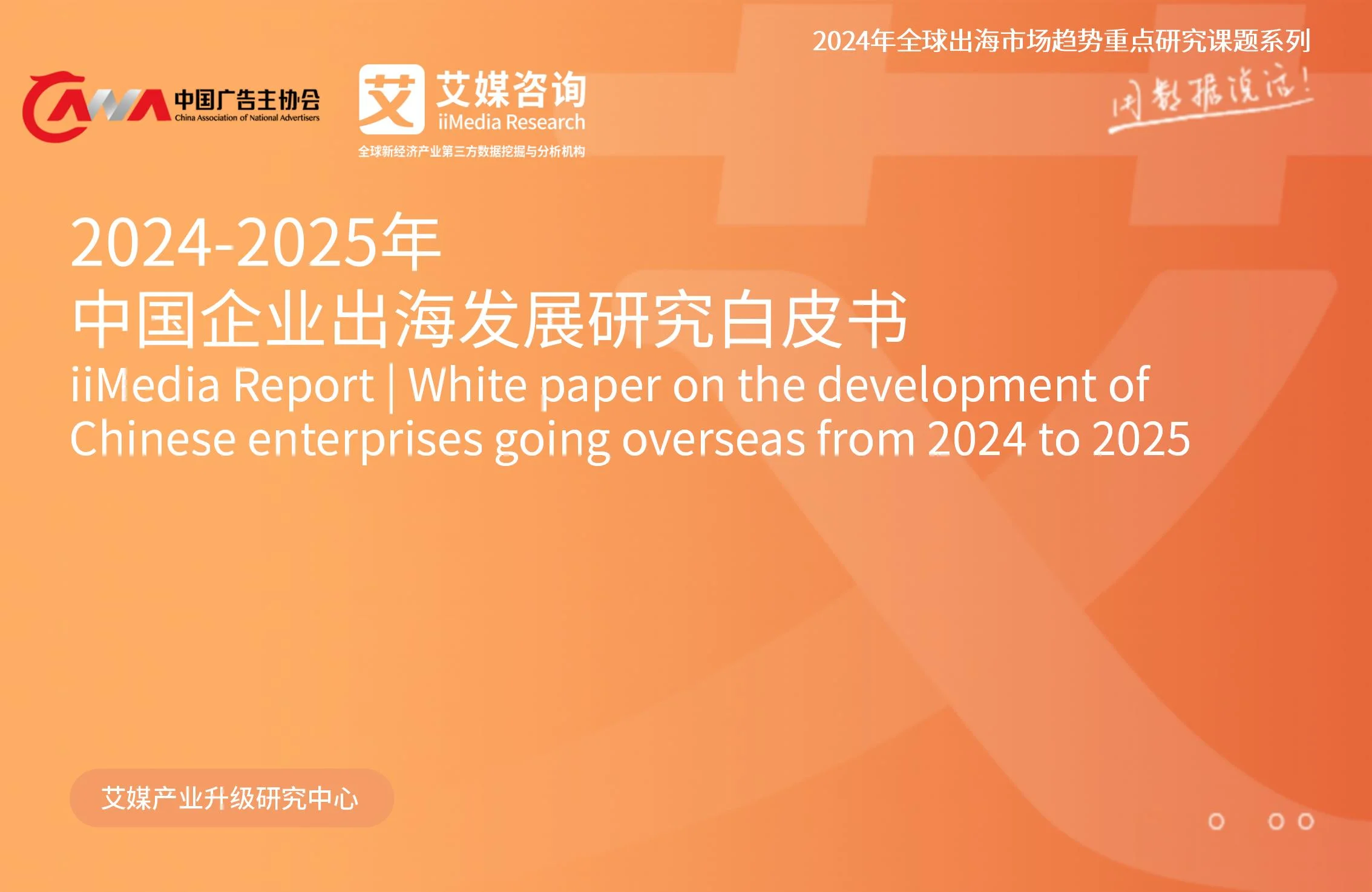关于“声音职业”的报告
艾媒咨询 | 2024年中国职业教育市场环境与用户行为调研报告
随着社会的快速发展与职场竞争的日益激烈,职业培训行业蓬勃发展。众多职场人士为了增强个人综合素质、提高与工作相关的技能水平,纷纷投身于各类职业培训之中。全球新经济产业第三方数据挖掘和分析机构iiMedia Research(艾媒咨询)最新发布的《2024年中国职业教育市场环境与用户行为调研报告》数据显示,在诸多职业培训领域中,专业性较高的行业尤为受到职场人士的青睐。具体而言,计算机类职业培训(23.60%)、机械与电工电子类(20.81%)、以及美容与保健类(20.34%)的参与率显著。同时,近九成的消费者倾向于定期参与职业培训,以持续提升个人竞争力。艾媒咨询分析师认为,在竞争激烈的社会环境中,通过参与职业培训来不断提升自我,无疑是职场人士追求进步与发展的上佳途径。因此,相关培训机构应紧密贴合市场需求,灵活开设多样化的职业培训项目,以满足不同行业、不同岗位职场人士的个性化学习需求。
With the rapid development of society and the increasingly fierce competition in the workplace, the vocational training industry is booming. In order to enhance the overall quality of individuals and improve the level of job-related skills, many professionals have devoted themselves to various vocational training. According to the latest "2024 China professional education market environment and consumer behavior survey report" released by iiMedia Research, a third-party data mining and analysis institution in the global new economy industry, among many vocational training fields, highly professional industries are particularly favored by professionals. Specifically, computer vocational training (23.60%), mechanical and electrical and electronics (20.81%), and beauty and health care (20.34%) had significant participation rates. At the same time, nearly 90% of consumers tend to regularly participate in vocational training to continuously improve personal competitiveness. Imedia Consulting analysts believe that in a highly competitive social environment, continuous self-improvement through participation in vocational training is undoubtedly the best way for professionals to pursue progress and development. Therefore, the relevant training institutions should be closely aligned with the market demand, flexible and diversified vocational training programs to meet the personalized learning needs of professionals in different industries and different positions.艾媒咨询 | 2025年中国在线音频市场消费行为调查数据
随着音频内容生态的持续升级,在线音频用户行为呈现多维特征,主要覆盖以通勤时段知识学习、睡前放松场景为例的碎片化应用领域,以有声书沉浸体验、播客社交互动为例的内容消费领域,以及智能硬件互联、AI语音交互为代表的技术融合领域。根据全球新经济产业第三方数据挖掘和分析机构iiMedia Research(艾媒咨询)最新发布的《2025年中国在线音频市场消费行为调查数据》数据显示,喜马拉雅以45.52%的市场份额占据行业领先地位,头部效应显著。用户接触在线音频平台的主要渠道集中于内容分享平台(小红书、知乎等),占比达42.98%,内容丰富度则成为选择平台的核心考量。在用户行为层面,放松心情为用户的主导需求,有声书与脱口秀类节目以超32%的喜爱度并列内容偏好榜首。原创性与时效性被用户视为音频内容的核心竞争力。知识付费产品选择中,音质音色、内容丰富度及界面设计构成决策关键三角。艾媒咨询分析师认为,平台需强化内容生态建设,通过AI技术优化个性化推荐,提升创作者扶持力度以激发优质内容产出,同时深化智能硬件联动与场景适配,构建“内容+技术+场景”的全链条服务体系,方能持续激活用户价值。
With the continuous upgrading of audio content ecology, online audio user behavior presents multi-dimensional characteristics, mainly covering the fragmented application fields such as commuting knowledge learning and bedtime relaxation scenes, the content consumption fields such as audio book immersion experience and podcast social interaction, and the technology integration fields represented by intelligent hardware interconnection and AI voice interaction. According to the latest "Consumer behavior survey data of China's online audio market in 2025" released by iiMedia Research, a third-party data mining and analysis institution in the global new economy industry, Himalaya occupies the industry leader position with a market share of 45.52%, and the head effect is significant. The main channels for users to contact online audio platforms are concentrated in content sharing platforms (XiaoHongshu, Zhihu, etc.), accounting for 42.98%, and content richness has become the core consideration in choosing platforms. In terms of user behavior, relaxing mood is the dominant demand of users, and audiobooks and talk shows rank the top of the content preferences list with over 32% of the likes. Originality and timeliness are regarded by users as the core competitiveness of audio content. In the selection of paid knowledge products, sound quality, sound color, content richness and interface design constitute the key decision triangle.iiMedia Research believe that the platform needs to strengthen the content ecological construction, optimize personalized recommendation through AI technology, enhance creator support to stimulate quality content output, and deepen intelligent hardware linkage and scene adaptation, build a "content + technology + scene" full chain service system, in order to continue to activate user value.艾媒咨询 | 2025年中国有声书市场消费行为调查数据
随着智能音频技术的持续升级,中国有声书行业已形成立体化生态体系,在用户体验领域、平台运营领域、内容消费领域形成多元化消费模式。根据全球新经济产业第三方数据挖掘和分析机构iiMedia Research(艾媒咨询)最新发布的《2025年中国有声书市场消费行为调查数据》数据显示,中国有声书用户呈现高频次、场景化、情感化的消费特征。用户内容消费呈现经典与多元并存趋势,名著以38.56%的偏好度占据内容选择首位,都市小说(35.37%)、文哲经典(32.45%)及悬疑探案(32.18%)构成主流类型。36.44%的用户将“调整情绪”列为首要收听目的,凸显有声书作为情感陪伴载体的社会价值。市场格局方面,喜马拉雅以30.98%的平台使用率保持领先,其核心竞争力源于40.29%用户认可的“书籍种类丰富”优势。但用户对平台改进需求同样显著,“丰富种类”“提升内容质量”“开发同步阅读功能”“构建个性化播放列表”都是用户希望平台能改进的。艾媒咨询分析师认为,行业需着力优化内容生产机制,强化经典IP有声化改编与原创内容开发双轨并行策略,通过AI推荐算法提升用户匹配精准度。建议平台建立创作者孵化体系,完善多设备端场景适配技术,同时探索“视听同步+社群互动”的创新服务模式,以满足用户对内容深度与体验升级的持续期待。
With the continuous upgrading of intelligent audio technology, China's audio book industry has formed a three-dimensional ecosystem, and formed a diversified consumption model in the field of user experience, platform operation, and content consumption. According to the latest Consumer behavior survey data of China audiobook market in 2025 released by iiMedia Research, a third-party data mining and analysis institution in the global new economy industry, Chinese audiobook users show high frequency, scene and emotional consumption characteristics. The content consumption of users showed a trend of coexistence of classics and diversity, with classics occupying the first place with 38.56% preference, and urban novels (35.37%), literary and philosophical classics (32.45%) and suspense and investigation (32.18%) constituted the mainstream types. 36.44% of users listed "adjusting emotions" as the primary purpose of listening, highlighting the social value of audio books as emotional companions. In terms of market pattern, Himalaya maintains the lead with 30.98% platform utilization rate, and its core competitiveness stems from the advantage of "rich book variety" recognized by 40.29% users. However, users' demand for platform improvement is equally significant, and "enriching categories", "improving content quality", "developing synchronous reading functions" and "building personalized playlists" are all things that users hope the platform can improve. iiMedia Research believe that the industry needs to focus on optimizing the content production mechanism, strengthen the dual-track parallel strategy of classic IP audio adaptation and original content development, and improve the accuracy of user matching through AI recommendation algorithms. It is suggested that the platform establish a creator incubation system, improve the multi-device scene adaptation technology, and explore the innovative service model of "audio-visual synchronization + community interaction" to meet users' continuous expectations for content depth and experience upgrade.艾媒咨询 | 2025年中国职业教育市场消费行为调查数据
随着职业培训体系的持续完善,其覆盖场景不断延伸,深入至以技能提升、职业转型为核心的个人发展领域,以在线课程、行业认证为代表的数字化学习领域,以及企业内训、校企合作等产教融合领域。根据全球新经济产业第三方数据挖掘和分析机构iiMedia Research(艾媒咨询)最新发布的《2025年中国职业教育市场消费行为调查数据》数据显示,2025年中国消费者职业培训参与率达91.90%,其中线下与线上结合的混合式培训以57.67%占比成为主流学习方式。消费者更倾向于选择2-10人小班课程(53.46%),且偏好半年一次的培训频率(38.13%)。在培训内容选择上,职业资格考试类培训(57.26%)与计算机类课程(24.97%)最受关注,反映出市场对专业资质认证和技术型人才的高度需求。数据显示,消费者参与培训的核心诉求集中于综合素质提升(37.99%),超六成受访者未来计划参与职业素养类培训(64.27%)。完成培训后,45.32%的消费者愿以兼职形式从事相关工作,其中电商运营领域(19.60%)吸引力最为突出。尽管56.72%的消费者对培训效果表示“比较满意”,但现存问题仍较显著:课程设置与市场需求脱节、师资力量薄弱、培训费用过高成为主要痛点。消费者期望重点提升职业技能与职业自信,同时呼吁培训机构优化课程定价体系,加强实践性内容创新,避免课程同质化现象。艾媒咨询分析师认为,职业培训机构需构建“需求导向”的课程研发机制,深度融合行业认证体系与企业用人标准。通过数字化技术赋能教学场景,打造灵活弹性的学习模式,同时强化就业对接服务与职业发展跟踪,形成“培训-认证-就业”的完整生态链。未来职业培训市场将向精细化、专业化方向持续升级。
With the continuous improvement of the vocational training system, its coverage scenarios continue to extend into the field of personal development with skills improvement and career transformation as the core, the field of digital learning represented by online courses and industry certification, and the field of integration of industry and education such as internal training and school-enterprise cooperation. According to the latest Survey data of consumer behavior in China's vocational education market in 2025 released by iiMedia Research, a third-party data mining and analysis institution in the global new economy industry, the participation rate of Chinese consumers in vocational training in 2025 is 91.90%. Among them, the combination of offline and online hybrid training accounted for 57.67% of the mainstream learning mode. Consumers are more inclined to choose small classes of 2-10 students (53.46%), and prefer semi-annual training frequency (38.13%). In terms of training content selection, vocational qualification examination training (57.26%) and computer courses (24.97%) received the most attention, reflecting the market's high demand for professional qualification certification and technical talents. The data show that the core demands of consumers to participate in training are focused on the improvement of comprehensive quality (37.99%), and more than 60% of respondents plan to participate in professional quality training in the future (64.27%). After completing the training, 45.32% of consumers are willing to engage in related work in the form of part-time, of which the e-commerce operation field (19.60%) is the most attractive. Although 56.72% of consumers expressed "relatively satisfied" with the training effect, the existing problems are still significant: the curriculum is out of step with the market demand, the strength of teachers is weak, and the training cost is too high. Consumers expect to focus on improving vocational skills and professional confidence, and call on training institutions to optimize the course pricing system, strengthen practical content innovation, and avoid the phenomenon of curriculum homogeneity. iiMedia Research believe that vocational training institutions need to build a "demand-oriented" course research and development mechanism, and deeply integrate the industry certification system and enterprise employment standards. Through digital technology to empower the teaching scene, create a flexible learning mode, while strengthening employment docking services and career development tracking, forming a "training-certification-employment" complete ecological chain. In the future, the vocational training market will continue to upgrade in the direction of refinement and specialization.艾媒咨询 | 2024-2025年中国企业出海发展研究白皮书
近年来,在数字化技术推动下,中国经济已步入高质量发展的新时代,应经济转型升级需求,越来越多的中国企业开始将目光投向海外市场,寻求更广阔的发展空间。2024年11月,国务院印发的《关于促进外贸稳定增长的若干政策措施》提出九个方面促进外贸平稳发展,中国企业出海已成时代发展必然趋势。在全球经济一体化的大背景下,中国企业出海不仅是为应对国内市场的饱和和竞争压力,更是为了在全球范围内优化资源配置,提升企业的国际竞争力。全球新经济产业第三方数据挖掘和分析机构iiMedia Research(艾媒咨询)最新发布的《2024-2025年中国企业出海发展研究白皮书》数据显示,2024年前三季度中国货物贸易进出口总值达32.33万亿元,同比增长5.3%,总体趋势稳中向好。尽管面临全球需求收缩、供给冲击、预期转弱三重压力,中国外贸进出口仍展现出较强韧性,助力中国外贸实现新的突破,增强企业出海信心。艾媒咨询分析师认为,愈多企业正加速从“爆款打造”向“品牌延伸”转型,寻求品牌效应,通过打造有辨识度的品牌与消费者建立更为紧密的联系和拥有更稳固的市场份额。目前,中国企业“走出去”正以价值链为导向,不断建立自上而下、步调统一的全球化战略及适应全球化经营的运营模式,出海企业经营朝合规化、精细化、本土化方向发展。
In recent years, driven by digital technology, China's economy has entered a new era of high-quality development.Because of the needs of economic transformation and upgrading, more and more Chinese enterprises have begun to seek a broader space for development in overseas markets. In November 2024, the "Several Policies and Measures on Promoting Stable Growth of Foreign Trade" issued by The State Council proposed nine aspects to promote stable development of foreign trade, and Chinese enterprises to go overseas has become an inevitable trend of the development of The Times. In the context of global economic integration, Chinese enterprises go overseas not only to cope with the saturation and competitive pressure of the domestic market, but also to optimize the allocation of resources on a global scale and enhance the international competitiveness of enterprises. According to the latest "White paper on the development of Chinese enterprises going overseas from 2024 to 2025" released by iiMedia Research, data show that in the first three quarters of 2024, the total value of China's import and export of goods is 32.33 trillion yuan, an increase of 5.3% year-on-year, and the overall trend is stable and good. Despite the triple pressures of shrinking global demand, supply shocks, and weakening expectations, China's foreign trade imports and exports have shown strong resilience, helping China's foreign trade achieve new breakthroughs and enhancing enterprises' confidence in going overseas. The iiMedia consulting analysts believe that more and more enterprises are accelerating the transformation from "explosive creation" to "brand extension", seeking brand effect, and establishing a closer relationship with consumers and having a more stable market share by creating recognizable brands. Nowadays, Chinese enterprises "going out" is guided by the value chain, and constantly establish a top-down, unified globalization strategy and an operating model that ADAPTS to global operations, and the management of overseas enterprises is developing in the direction of compliance, refinement and localization.艾媒咨询 | 2025年中国在线考试SaaS消费者行为调查数据
在线考试 SaaS 平台,是基于软件即服务(SaaS)这一云计算服务模式搭建的平台。通过互联网,以浏览器为载体,将在线考试相关应用程序交付给终端用户。近年来,人工智能、大数据等前沿技术的融入,进一步推动平台在智能监考、精准学情分析等方面取得突破,应用场景不断拓展至职业资格认证、大规模招生考试等严肃场景。根据全球新经济产业第三方数据挖掘和分析机构iiMedia Research(艾媒咨询)最新发布的《2025年中国在线考试SaaS用户行为调查数据》数据显示,32.06% 的用户高频使用在线考试功能,凸显其作为平台核心功能的地位,反映出用户对在线考试这一基础且关键功能的强烈依赖,也意味着企业要持续优化该功能,确保考试流程顺畅、体验良好。而产品功能与需求匹配度以 26.84% 占比居首,直接表明用户挑选产品时,实用价值远超其他因素。这警示企业在产品研发与迭代时,需深度调研不同用户群体需求,无论是教育机构、企业还是政府部门,都要做到功能精准对接,避免功能冗余或缺失,通过精准匹配需求来提升产品竞争力与用户忠诚度。艾媒咨询分析师认为,中国市场凭借庞大教育与企业用户基数、政策支持、技术进步等优势,增长潜力巨大。尽管面临技术瓶颈、安全隐患、市场竞争等挑战,但随着智能化、个性化、跨行业融合、国际化等趋势推进,行业有望在规范中持续创新发展。
Online exam SaaS platform, is based on the software as a service (SaaS) this cloud computing service model built platform. Through the Internet, with the browser as the carrier, the online exam related applications are delivered to the end user. In recent years, the integration of cutting-edge technologies such as artificial intelligence and big data has further promoted the platform to make breakthroughs in intelligent invigilation and accurate learning analysis, and the application scenarios have been continuously expanded to serious scenarios such as professional qualification certification and large-scale enrollment exams. According to the latest "Data from the China online exam SaaS user behavior survey in 2025" released by iiMedia Research, a third-party data mining and analysis institution in the global new economy industry, 32.06% of users frequently use online exam function, highlighting its status as a core function of the platform. Reflecting users' strong reliance on this fundamental and critical function of online testing, it also means that enterprises must continue to optimize this function to ensure a smooth test process and a good experience. The matching degree of product function and demand takes the first place with 26.84%, which directly indicates that when users choose products, the practical value far exceeds other factors. This warns enterprises that in product development and iteration, it is necessary to deeply investigate the needs of different user groups, whether it is educational institutions, enterprises or government departments, to achieve accurate functional docking, avoid functional redundancy or loss, and enhance product competitiveness and user loyalty by accurately matching needs. Analysts from IIMedia Consulting believe that the Chinese market has huge growth potential with its huge education and enterprise user base, policy support, technological progress and other advantages. Despite the challenges such as technical bottlenecks, security risks, and market competition, the industry is expected to continue to innovate and develop in the norms with the advancement of intelligent, personalized, cross-industry, integration, and internationalization.艾媒咨询 | 2024-2025年中国数字文化产业发展现状及趋势分析报告
近年来,随着数字技术的迅猛发展,数字文化产业已经深刻融入我国经济社会的各个领域,成为数字经济发展的新动能。国家统计局数据显示,2024年前三季度,规模以上文化企业实现营业收入99668亿元,比上年同期增长5.9%。其中,数字文化新业态特征明显的16个行业小类实现营业收入41616亿元,比上年同期增长10.0%,占总营业收入的比重高达41.8%。全球新经济产业第三方数据挖掘和分析机构iiMedia Research(艾媒咨询)最新发布的《2024-2025年中国数字文化产业发展现状及趋势分析报告》显示,2024年前三季度全国数字文化新业态的营业收入已飙升至4.16万亿元,与2019年的1.99万亿元相比,实现了惊人的2.1倍增长。同时,其在全部规模以上文化企业营业收入中的占比也大幅提升至41.8%,与2019年相比,增长了18.9个百分点,进一步彰显了数字文化产业在文化产业整体格局中的核心地位。
In recent years, with the rapid development of digital technology, the digital cultural industry has been deeply integrated into various fields of China's economy and society, becoming a new driving force for digital economic development. According to data from the National Bureau of Statistics, the scaled-up cultural enterprises achieved a total revenue of 99,668 billion yuan in the first three quarters of 2024, up 5.9% from the same period last year. Of which, the 16 sub-categories with obvious characteristics of digital cultural new industries achieved a revenue of 416 billion yuan, up 10.0% from the same period last year, accounting for 41.8% of the total revenue. The latest report released by iiMedia Research, a third-party data mining and analysis institution for global new economy industries, shows that the revenue of digital cultural new industries in China reached 416 billion yuan in the first three quarters of 2024, a staggering 2.1 times higher than the 199 billion yuan in the same period of 2019. At the same time, its share in the total revenue of scaled-up cultural enterprises has also increased significantly to 41.8%, up 18.9 percentage points from 2019, further highlighting the core position of the digital cultural industry in the overall cultural industry landscape.(演讲版)中国广告主协会X艾媒咨询 | 2024-2025年中国企业出海发展研究白皮书
近年来,在数字化技术推动下,中国经济已步入高质量发展的新时代,应经济转型升级需求,越来越多的中国企业开始将目光投向海外市场,寻求更广阔的发展空间。2024年11月,国务院印发的《关于促进外贸稳定增长的若干政策措施》提出九个方面促进外贸平稳发展,中国企业出海已成时代发展必然趋势。在全球经济一体化的大背景下,中国企业出海不仅是为应对国内市场的饱和和竞争压力,更是为了在全球范围内优化资源配置,提升企业的国际竞争力。全球新经济产业第三方数据挖掘和分析机构iiMedia Research(艾媒咨询)最新发布的《2024-2025年中国企业出海发展研究白皮书》数据显示,2024年前三季度中国货物贸易进出口总值达32.33万亿元,同比增长5.3%,总体趋势稳中向好。尽管面临全球需求收缩、供给冲击、预期转弱三重压力,中国外贸进出口仍展现出较强韧性,助力中国外贸实现新的突破,增强企业出海信心。艾媒咨询分析师认为,愈多企业正加速从“爆款打造”向“品牌延伸”转型,寻求品牌效应,通过打造有辨识度的品牌与消费者建立更为紧密的联系和拥有更稳固的市场份额。目前,中国企业“走出去”正以价值链为导向,不断建立自上而下、步调统一的全球化战略及适应全球化经营的运营模式,出海企业经营朝合规化、精细化、本土化方向发展。
In recent years, driven by digital technology, China's economy has entered a new era of high-quality development.Because of the needs of economic transformation and upgrading, more and more Chinese enterprises have begun to seek a broader space for development in overseas markets. In November 2024, the "Several Policies and Measures on Promoting Stable Growth of Foreign Trade" issued by The State Council proposed nine aspects to promote stable development of foreign trade, and Chinese enterprises to go overseas has become an inevitable trend of the development of The Times. In the context of global economic integration, Chinese enterprises go overseas not only to cope with the saturation and competitive pressure of the domestic market, but also to optimize the allocation of resources on a global scale and enhance the international competitiveness of enterprises. According to the latest "White paper on the development of Chinese enterprises going overseas from 2024 to 2025" released by iiMedia Research, data show that in the first three quarters of 2024, the total value of China's import and export of goods is 32.33 trillion yuan, an increase of 5.3% year-on-year, and the overall trend is stable and good. Despite the triple pressures of shrinking global demand, supply shocks, and weakening expectations, China's foreign trade imports and exports have shown strong resilience, helping China's foreign trade achieve new breakthroughs and enhancing enterprises' confidence in going overseas. The iiMedia consulting analysts believe that more and more enterprises are accelerating the transformation from "explosive creation" to "brand extension", seeking brand effect, and establishing a closer relationship with consumers and having a more stable market share by creating recognizable brands. Nowadays, Chinese enterprises "going out" is guided by the value chain, and constantly establish a top-down, unified globalization strategy and an operating model that ADAPTS to global operations, and the management of overseas enterprises is developing in the direction of compliance, refinement and localization.艾媒咨询 | 2024-2025年中国无人自助台球消费行业市场研究报告
iiMedia Research(艾媒咨询)数据显示,数据显示,2023年中国新增台球相关企业数量达到106641家,同比增长54.1%;2024年1-10月,中国新增台球相关企业数量达到113994家。此外,中国24小时无人自助台球厅数量持续上升,2024年4月同比增速达到25.0%。无人自助台球厅凭借其24小时营业和自主服务的特点,成为休闲娱乐领域的新宠。数据显示,40.6%的无人自助台球消费者每周光顾台球厅达3-4次,每周光顾台球厅5-6次的消费者占比达22.6%。随着科技的飞速发展和消费者对智能化产品需求的日益增长,台球行业正迅速迈向AI智能化时代。部分无人自助台球厅通过提供全屋智能软硬件设备代替人工管理,实现24小时营业,还引入AI教练、AI裁判等功能提升用户体验。
iiMedia Research data shows that the number of new billiards related enterprises in China in 2023 reached 106,641, an increase of 54.1%; From January to October 2024, the number of new billiards related enterprises in China reached 113,994. In addition, the number of 24-hour unmanned self-service pool halls in China continues to rise, with a year-on-year growth rate of 25.0% in April 2024. The unmanned self-service billiard hall has become a new favorite in the field of leisure and entertainment by virtue of its 24-hour operation and independent service. According to the data, 40.6% of self-service billiards consumers patronize the billiard hall 3-4 times a week, and the proportion of consumers patronizing the billiard hall 5-6 times a week is 22.6%. With the rapid development of science and technology and the increasing demand of consumers for intelligent products, the billiards industry is rapidly moving towards the era of AI intelligence. Some unmanned self-service billiards halls achieve 24-hour operation by providing whole-house intelligent hardware and software equipment instead of manual management, and also introduce AI coach, AI referee and other functions to improve user experience.
- 1
- 2
- 3
- 4
- 5

















